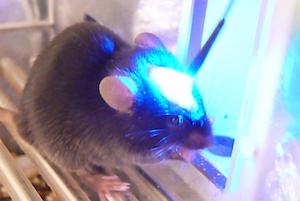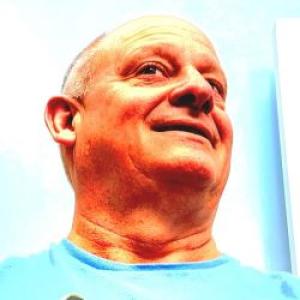Yin Lab
We study neural circuits underlying the learning and generation of actions. We use in vitro and in vivo electrophysiology, optogenetics, and quantitative analysis of behavior in rodents.
Current research in the lab encompasses three areas:
1. The analysis of cortico-basal ganglia networks using wired and wireless in vivo stimulation and recording in awake, behaving rodents combined with permanent and reversible lesions, optogenetics, and local pharmacological manipulations.
2. The analysis of voluntary behavior using operant procedures as well as video-based and automatic parsing of natural behaviors.
3. The cellular and molecular mechanisms of synaptic transmission and plasticity in the basal ganglia, a set of brain structures critical for the generation and selection of voluntary behaviors: e.g. the contributions of dopamine, adenosine, opioids, and endocanabinoids to glutamatergic and GABAergic transmission and plasticity.
Teaching
Brain and Behavior
Gateway course for the undergraduate neuroscience major
Fall every year
Yin Lab Members
Yin Lab Techniques
We use many techniques to study the integrative functions of the brain.
 Our lab has 7 rooms designed specifically for the analysis of rodent behavior, equipped with operant chambers for physiology and behavior, data acquisition systems for multi-electrode recording from behaving mice and rats, and a whole-cell slice patch-clamp station for the study of synaptic transmission and plasticity.
Our lab has 7 rooms designed specifically for the analysis of rodent behavior, equipped with operant chambers for physiology and behavior, data acquisition systems for multi-electrode recording from behaving mice and rats, and a whole-cell slice patch-clamp station for the study of synaptic transmission and plasticity.
- Reward-guided behaviors: We use instrumental/operant and Pavlovian methods to study the appetitive behavior of rats and mice. We are refining such methods to allow unprecedented quantitative analysis of the behavior in question.
- In vivo recording: We use multielectrode arrays to record up to hundreds of neurons from multiple brain structures in awake and behaving mice and rats. Single-unit activity, multi-unit activity, as well as local field potential will be recorded from multiple brain regions that form a functional circuit.
- In vitro (and ex vivo) whole-cell patch-clamp recording: We use whole-cell patchclamprecordingfromsingleneuronstocharacterize the effects of different types of learning on cellular propertiessuchassynapticstrength,excitability, andother aspects of synaptictransmission. We also study the synaptic pharmacology of neurons in the basal ganglia.
 Genetic tools: We take advantage of a variety of genetic tools available in mice to visualize specific neural circuits andto identify the molecular and cellular mechanisms underlying behavior. We use standard optogenetic techniques to activate and inactivate specific neuronalpopulations.
Genetic tools: We take advantage of a variety of genetic tools available in mice to visualize specific neural circuits andto identify the molecular and cellular mechanisms underlying behavior. We use standard optogenetic techniques to activate and inactivate specific neuronalpopulations.
Yin Publications
Bakhurin, Konstantin I., and Henry H. Yin. “Closing the loop on models of interval timing.” Nature Neuroscience 25, no. 3 (March 2022): 270–71. https://doi.org/10.1038/s41593-022-01015-7.
Barter, J. W., and H. H. Yin. “Achieving natural behavior in a robot using neurally inspired hierarchical perceptual control.” Iscience 24, no. 9 (September 24, 2021). https://doi.org/10.1016/j.isci.2021.102948.
Hughes, Ryan N., Glenn D. R. Watson, Elijah A. Petter, Namsoo Kim, Konstantin I. Bakhurin, and Henry H. Yin. “Precise coordination of three-dimensional rotational kinematics by ventral tegmental area GABAergic neurons.” Current Biology : Cb 31, no. 9 (May 2021): 2037. https://doi.org/10.1016/j.cub.2021.04.008.
Li, Haofang E., Mark A. Rossi, Glenn D. R. Watson, H Gregory Moore, Min Tong Cai, Namsoo Kim, Katrina A. Vokt, et al. “Hypothalamic-Extended Amygdala Circuit Regulates Temporal Discounting.” The Journal of Neuroscience : The Official Journal of the Society for Neuroscience 41, no. 9 (March 2021): 1928–40. https://doi.org/10.1523/jneurosci.1836-20.2020.
Watson, Glenn D. R., Ryan N. Hughes, Elijah A. Petter, Isabella P. Fallon, Namsoo Kim, Francesco Paolo Ulloa Severino, and Henry H. Yin. “Thalamic projections to the subthalamic nucleus contribute to movement initiation and rescue of parkinsonian symptoms.” Science Advances 7, no. 6 (February 5, 2021). https://doi.org/10.1126/sciadv.abe9192.
Bakhurin, Konstantin I., Ryan N. Hughes, Joseph W. Barter, Jinyong Zhang, and Henry H. Yin. “Protocol for Recording from Ventral Tegmental Area Dopamine Neurons in Mice while Measuring Force during Head-Fixation.” Star Protocols 1, no. 2 (September 2020): 100091. https://doi.org/10.1016/j.xpro.2020.100091.
Lusk, Nicholas, Warren H. Meck, and Henry H. Yin. “Mediodorsal Thalamus Contributes to the Timing of Instrumental Actions.” The Journal of Neuroscience : The Official Journal of the Society for Neuroscience 40, no. 33 (August 2020): 6379–88. https://doi.org/10.1523/jneurosci.0695-20.2020.
Kim, Il Hwan, Namsoo Kim, Sunwhi Kim, Koji Toda, Christina M. Catavero, Jamie L. Courtland, Henry H. Yin, and Scott H. Soderling. “Dysregulation of the Synaptic Cytoskeleton in the PFC Drives Neural Circuit Pathology, Leading to Social Dysfunction.” Cell Rep 32, no. 4 (July 28, 2020): 107965. https://doi.org/10.1016/j.celrep.2020.107965.
Hughes, Ryan N., Konstantin I. Bakhurin, Elijah A. Petter, Glenn D. R. Watson, Namsoo Kim, Alexander D. Friedman, and Henry H. Yin. “Ventral Tegmental Dopamine Neurons Control the Impulse Vector during Motivated Behavior.” Current Biology : Cb 30, no. 14 (July 2020): 2681-2694.e5. https://doi.org/10.1016/j.cub.2020.05.003.
Bakhurin, Konstantin I., Xiaoran Li, Alexander D. Friedman, Nicholas A. Lusk, Glenn Dr Watson, Namsoo Kim, and Henry H. Yin. “Opponent regulation of action performance and timing by striatonigral and striatopallidal pathways.” Elife 9 (April 23, 2020). https://doi.org/10.7554/elife.54831.
Yin Lab Collborators
-
Nicole Calakos, Duke Neurology
-
Cagla Eroglu, Duke Cell Biology
-
Pei Zhong, Duke Mechanical Engineering
Yin Lab Open Positions
Please email Dr. Henry Yin (hy43@duke.edu) and include a copy of your CV for any of the following positions:
- Research Assistant
This position will be responsible for: Histological analysis of mouse brains and neuroanatomy; Precise surgeries targeting different brain regions with electrodes and optic fibers; Running optogenetic and electrophysiological experiments in behaving mice.To qualify, you must have: A BS/BA degree, majoring in science, engineering or related fields; Meticulous organization, attention to detail, and enthusiam for neuroscience research; Past research experience working with rodents
- Undergraduate research assistants:
Seeking motivated undergraduates with knowledge of biology, psychology, engineering, or computer science. Students will learn to acquire skills in animal surgery, brain dissection, histology, electrophysiology, behavioral testing, and data analysis. - Graduate students:
Graduate students will be accepted for Systems and Integrative Neuroscience Program in the department of Psychology and Neuroscience, the Department of Neurobiology and the Center for Cognitive Neuroscience. Those interested should contact Dr.Yin first before applying. - Postdocs:
Postdoc candidates with backgrounds in electrophysiology, neuroanatomy, molecular biology, and engineering/physics/computer science will be considered.













